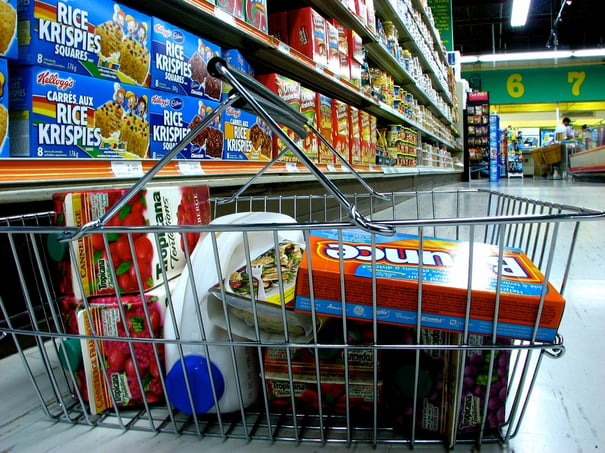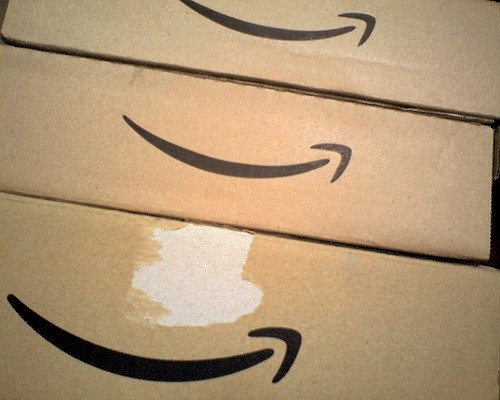Reports have been leaking out for a while, but this week officially brought word that Amazon is indeed branching out into the brick and mortar grocery business, and in a big way. Four years in the making, the 1,800 sq/ft, Seattle store, called Amazon Go, is currently in beta testing, with Amazon employees serving as its only customers, and will publicly launch in early 2017.
What, other than the name, makes this store so unique? Relying on heretofore unseen technological integration, it will be a “new kind of store with no checkout required.” Yup, that’s right—Amazon just went and reinvented the grocery shopping experience.
“No, Seriously”
While we don’t technically know how it works, we now know how Amazon says it will work. When customers enter the store, they will sign in using the Amazon Go app. Then—using computer vision, sensor fusion, and deep learning—the store will register when customers pick up items and will add them to their virtual shopping cart. When they exit the store, their cart is automatically totaled and their Amazon account is billed. This “Just Walk Out Shopping” experience, Amazon’s promotional material claims, relies on “the world’s most advanced shopping technology” to give customers, “No lines, no checkout. (No, seriously).”
Prime Numbers
Some doubt, however, that this technology is entirely ready for, pardon the pun, Prime time. While sensors and artificial intelligence can discern in which direction customers look, and then identify product labels they select, according to one analytics firm CEO, “Solving the problem of attaching the products to the person as they leave the store is going to require something new—or something we’re not aware of today. Tying the two together at 100 percent accuracy, that’s a problem that’s hard to solve.” And they need 100% accuracy, otherwise they are either defrauding customers or permitting theft from their stores.
The roadblocks to obviating grocery checkout are significant: shopping is an imprecise exercise that everybody does a little differently. Sorting through the habits of shoppers who pick up and then misplace items, effectively pricing items by weight absent a scale, following laws governing alcohol and tobacco purchases, and figuring out how to give groups of customers the flexibility to split their purchase all present interesting obstacles. Said the same analyst, “I think this is the future of retail. I just expected, until we heard about this, that it was a little further out than it seems—or than Amazon is making it seem.”

The Road to Success
Yet betting against Amazon rarely seems wise. The problems they need to solve—accurately and quickly identifying items and attaching them to a customer—seemingly combines two things Amazon is already really good at: the identification technology that makes their massive warehouses hum, and the artificial intelligence that powers their Echo phenomenon.
Also, they set themselves on a road to success through their rollout strategy. By controlling literally everything in the grocery store—its infrastructure, its customers, its merchandise—Amazon can take incremental steps towards their bold proclamations. For example, if their technology has particular difficulty identifying a certain item, let’s say kumquats, they can hold off on stocking them until they get it right.
And no doubt the machines doing the learning will also learn how to aggregate customer habits to better project trends and to better distribute products throughout the store. According to industry expert Phil Lempert, they will also use data collected to make recommendations and even offer special pricing to individual shoppers.
Customer Service Concerns
But at least one industry analyst wondered about the lack of emphasis on customer service within Amazon Go, noting, “There’s a point at which not having in-store personnel becomes problematic.” Some consumers expressed similar concerns about machines replacing associates and the implications for privacy, cost, and usability.
But for every naysayer, there is somebody like Sandra Rios, a recent Prime member who told the New York Post, “I’m excited about trying it out. I won’t have to deal with lines, and it’s convenient. It’s amazing how far along technology has come.”
This head-first dive into grocery is yet another effort to be at the forefront of consumers’ minds for every conceivable product or service. In fact, this isn’t even the only grocery design Amazon is rolling out. They also plan to open a drive through store concept in Seattle, and seem for now to be content kicking around game-changing ideas and seeing what sticks.
Nobody knows how consumers will do their grocery shopping ten years from now, but with the news coming out of Seattle, we know it will look nothing like it does today.


